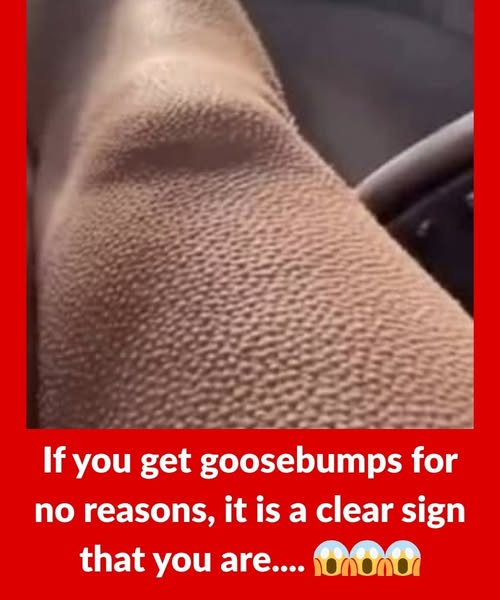Goosebumps are a familiar, harmless reaction when you get cold or experience strong feelings like excitement, awe, or fear. This happens because tiny muscles near your hair follicles tighten, making the hairs stand up. Most of the time, this is just your body’s way of reacting to a chilly breeze or a sudden emotion.
When Goosebumps Are Normal
You can expect goosebumps in situations like:
-
Stepping into cold air or water
-
Hearing a moving song or recalling a powerful memory
-
Watching a scary or suspenseful film
In these cases, your body is activating its natural “fight or flight” response. Adrenaline is released, your skin reacts, and those little hairs stand up. This is a classic, healthy response—not a sign that anything’s wrong.
Unexplained Goosebumps: Could It Be More?
But what if you notice goosebumps popping up for no obvious reason? If you’re not cold or emotionally moved, frequent goosebumps might point to an underlying issue. Here are a few possible causes to consider:
Nervous System Issues
The autonomic nervous system handles things you don’t think about, like breathing and heartbeat. Sometimes, nerve conditions such as epilepsy, multiple sclerosis, or autonomic neuropathy can disrupt these functions and cause unexplained goosebumps, tingling, or chills.
Seizure Activity
There is a rare type of seizure—sometimes called a “piloerection seizure”—that doesn’t cause convulsions but does produce chills, shivers, or waves of goosebumps. If you notice these symptoms along with confusion or blackouts, it’s a good idea to see a specialist.
Hormonal Surges
Adrenaline rushes caused by hormone imbalances or certain adrenal gland conditions, such as pheochromocytoma, can result in a rapid heartbeat, sweating, and spontaneous goosebumps.
Emotional Stress and Anxiety
Ongoing stress or anxiety can trigger physical reactions even without a clear emotional cause. Goosebumps might appear with other symptoms like sweating, trembling, or a tight chest, simply as a response to long-term psychological pressure.
Skin Conditions
Some skin issues, such as keratosis pilaris, lead to tiny bumps that can look and feel like goosebumps, even though they’re not triggered by cold or emotion.
When Should You Check with a Doctor?
It’s wise to seek medical advice if you notice:
-
Goosebumps occurring often without a clear reason
-
Other symptoms like numbness, confusion, or weakness
-
Frequent anxiety or panic attacks
-
Unusual changes in blood pressure, heart rate, or body temperature
A healthcare professional can help uncover whether the cause is neurological, hormonal, or psychological.
There it is
Most goosebumps are harmless and short-lived. Still, if you notice them appearing for no reason—or alongside other symptoms—your body could be hinting at something deeper. Staying aware of small changes can help you catch bigger issues early, so don’t ignore your instincts.
